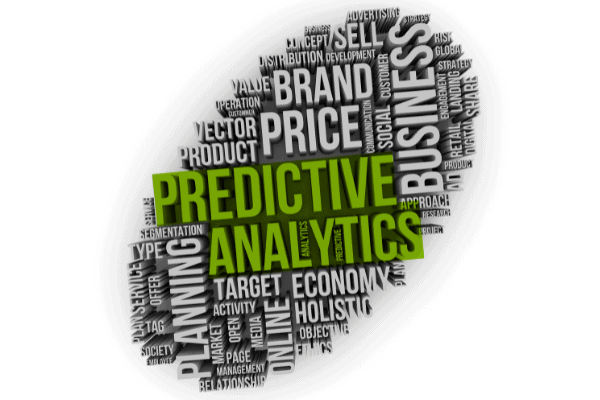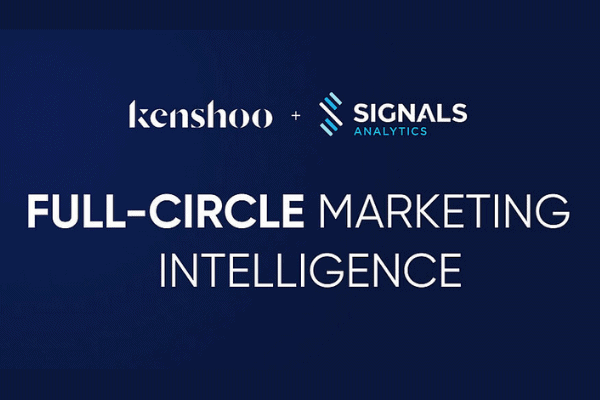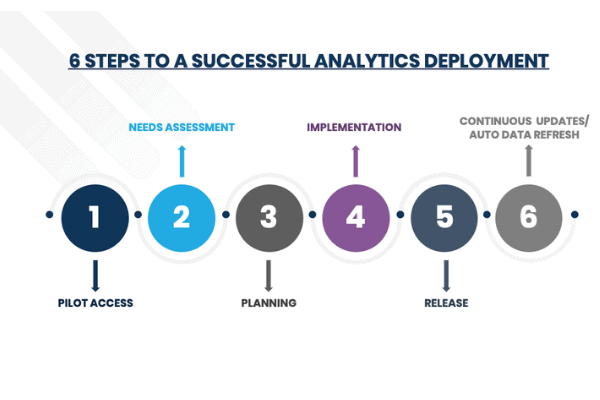Skai does this right now, for a wide range of consumer brands.
Here’s how we do it: First, we collect and connect a wide variety of data sources. Then, we contextualize that data to make it understandable. That contextualized data can then be interpreted into actionable insights that give businesses the confidence to make wide-ranging, highly impactful decisions.
Predictive modeling is one way Skai makes petabytes of data insightful and actionable over the long term. The modeling works by identifying and understanding trends and patterns in historical data and then applying those learnings to predict future opportunities and risks.
Knowing the future is highly valuable, so many organizations and data analytics firms attempt to uncover predictions. But they face two primary obstacles standing between data and actionable insights:
- Results that are too complex. Data science-centric companies may have highly accurate modeling, but the model outputs can be too complex for business teams to understand and act upon quickly. Often, only the data scientists themselves are able to interpret results.
- Lack of varied data sources. Less technologically advanced organizations may use a single data source – say, historical sales data – in their modeling. But this backward-looking data is isolated from other influential variables. It can’t predict future changes in consumer habits and preferences or changes in the competitive landscape and thus cannot predict future sales, trends, or opportunities.
Skai sidesteps both of these obstacles by basing our insights on more than 13,000 well-connected data sources and including the “why” in our predictions, making them explainable, understandable, and available to all decision-makers. The process begins with a specific business question, which leads us to identify the relevant data sets and models that will deliver actionable predictions. Our granular view of the market landscape allows us to drill down to the attribute level and answer questions as narrow as:
- Which ingredient will rise in the market in the next 1-3 years?
- Which features and benefits should we prioritize for optimal product positioning?
- Which emerging brands should be considered for M&A in the next 3 years?
A case study on the impact of broad predictions: actionability
A Skai client in the confectionary space was interested in finding a way to predict which product features – such as travel-friendly packaging and trans fat-free ingredient lists – would emerge in the next three years.
During the modeling stage, we created hundreds of predictors from confectionary-related data sources and embedded business logic to ensure all results were really relevant. Some of these models tested the link between product sales and mentions of individual product features amongst consumer reviews; these models validated that online consumer discussions of product features predicted a future increase in sales of products with those features.
After refining the prediction for accuracy, Skai was able to explain which data types would indicate more immediate trends. The client was empowered with the right data sets to watch for coming trends.
A case study on answering specific business questions with predictive analytics
A leading pet food company asked Skai to forecast the next trending plant-based protein in pet food. With hardly any popular plant-based proteins for pets on the market today, historical sales data alone wouldn’t help. We needed to examine deeper and broader data sets to find an answer that would drive long-term product development strategies for the brand.
We first identified all products in the market that claimed to contain plant-based proteins. Then we analyzed the impact of additional ingredients on those products’ sales performance.
These analytics helped us understand:
- The distribution of ingredients across products
- Whether the number of ingredients was a predictor for sales
- Which plant-based proteins were associated with higher sales
We discovered that “ingredient-central” products – or those with limited additional ingredients beyond the primary plant-based protein – were seen by consumers as higher quality than products with many ingredients. In addition, the plant-based proteins that stood alone or with few other ingredients were seen as higher quality than other proteins.
This data not only identified the plant-based proteins that were on the rise, but also showed that any new products containing those proteins should limit additional ingredients in order to trend better among consumers. The pet food client received an accurate prediction about the next big protein as well as an explanation of why that protein would rise in popularity, which is key to meeting customer expectations, establishing effective marketing messaging, and more.
Determining the accuracy of predictions
The best way to ensure that a prediction is trustworthy is to use diverse, connected data sources to generate it.
Each predictive model we create has a few layers designed to maximize accuracy in answers to specific client questions. Each output has a different accuracy score since the data subset for each question may show different patterns. Together, these outputs deliver a highly accurate result. But it is always difficult to determine the true accuracy of a prediction, particularly when determining future trends or products that aren’t yet in the market. Beware of providers who claim total accuracy in their predictions.
Actionability is a much better measure of the value of a prediction. Think of it this way: if a data analytics team can accurately predict that hemp protein will be the next big pet food ingredient, but they can’t explain why, then a pet food brand may decide to simply add hemp protein to an existing dog food that has 15 additional ingredients. But this product will likely fail – not because the forecasted popularity of hemp protein was wrong, but because the prediction failed to include the reason why hemp protein is trending: because it can stand alone, or with few other ingredients, which signals its superior quality over other proteins and thus drives sales. In this case, predicting hemp protein’s coming rise in popularity didn’t drive any meaningful impact for the business. It wasn’t truly actionable.
What critical business questions do you wish you had answers to? What decisions would you make if you knew what was going to happen in your marketplace in the next 1-3 years, and why?
————————————–
*This blog post originally appeared on Signals-Analytics.com. Kenshoo acquired Signals-Analytics in December 2020. Read the press release.





